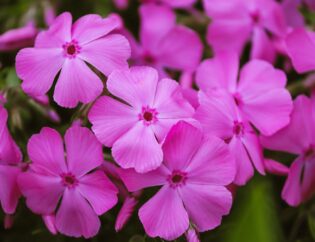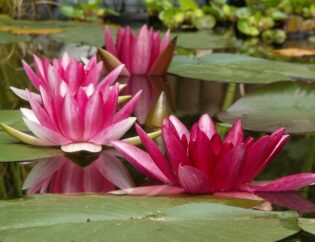
When it comes to residential outdoor spaces, low voltage landscape lighting is the most common option. These systems are considered DIY friendly to install, and components and kits are widely available.
Advantages of Low Voltage Landscape Lighting
One advantage of low voltage landscape lighting is that it is extremely DIY-friendly. It does not need to be deeply dug into the ground, making it easier for beginners and making set-up less time-consuming.
They are fairly simple to install and require no electric experience, which is perfect if this is your first time installing lights. Because of their easy installation, relocation is possible if you decide to change the design of your landscaping lights.
Low voltage landscape lighting is also a great choice because there are energy efficient fixtures available. LED options last for years and use very little energy. Solar lights are another DIY option, but it’s important to remember that they can be unreliable in cloudy conditions.
And even when fully charged, solar lights may not stay lit until morning. In comparison, low voltage systems provide reliable lighting independent of the weather.
Another advantage of low voltage landscape lighting systems is that they’re inexpensive and considered safe to use. The low voltage reduces the risk of severe electrical shock.
Low voltage landscape lighting is particularly well-suited to pathways, walkways, gardens, open areas, and decks. They are extremely versatile and the perfect addition to any outdoor area!
Limitations of Low Voltage Landscape Lighting
Although low voltage landscape lighting has many benefits, there are a few limitations you should be aware of before investing.
If you’re planning to use low-voltage lighting for places like driveways that require more powerful lights, you may need more electrical power than a low voltage system can provide.
Additionally, some electrical work is required to set up the system. Homeowners uncomfortable with that may prefer to use individual solar lights.
Landscape Lighting Design
When planning the placement of each light, be strategic. Going overboard with lights can lead to an undesirable stadium effect. Instead, place lights carefully to enhance the landscape without washing it out.
Common goals include spotlighting a tree or feature, lighting and defining a path, or illuminating a pond. Stagger light placement to keep things organic and avoid the dreaded runway effect.
Choose the Right Kelvin Temperature
Sometimes, lighting looks off, mismatched, or harsh. Getting the kelvin temperature wrong will cause all of these problems with the final design.
Fortunately, it isn’t complicated. Lower values in the 2000-3000K range yield warm, yellow-toned light like a candle or lantern. Higher values over 4000K give brighter, crisper light the higher you go. Look to existing lights in the yard to choose the best light temperature for your landscape.
A Few Tips to Keep In Mind
-
- If your kit comes with quick connectors, consider upgrading to outdoor-specific gel ones. They’ll last longer.
- Use electrical (EMT) conduit to run wire underneath a concrete walkway to the other side.
- Always have utilities marked before digging. Contact Georgia811 for this no-charge service.
- Hidden fixtures make for more attractive landscapes, generally speaking.
- Don’t place lights too close to growing trees; leave room for growth.
- Don’t overload a transformer.
- Choose the right Kelvin temperature.
Prefer to Have Your Lighting Professionally Installed?
Here at Atlanta Turf & Tree, we’ve got the practical knowledge to get things installed right and the artistic eye to craft them beautifully. We’ve got 35 years of combined experience building beautiful, lasting landscapes for our clients. Contact our landscaping services experts to get started on your project.









